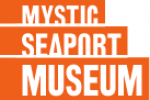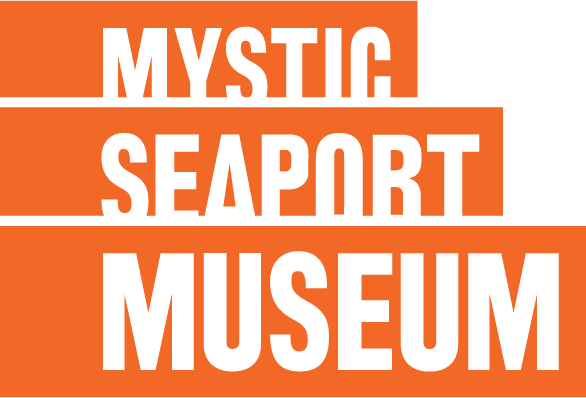
One thing about wood: It’s not shiny.
Sure, you can sand it and varnish it and make it all smooth and shiny. But it doesn’t start out shiny.
Aluminum, on the other hand, is shiny. From minute one, it’s smooth and shiny, and if a ray of sunlight falls on it, it even sparkles.
The other thing about aluminum is that it’s trickier to cut than wood. And of course, while wood compresses when you attach one piece to another, aluminum doesn’t give, a factor that must be accounted for when making the complex calculations so all of the parts will fit together.
But other than those sort of minor details, building a boat out of aluminum is strikingly similar to building one out of wood. Walter Ansel, senior shipwright in the Museum’s Henry B. duPont Preservation Shipyard, has spent the last two years overseeing construction of an aluminum garvey push boat that will be added to the working vessels at Mystic Seaport this spring.
Slated to be named Volunteer, the “little tug boat” will be launched during PILOTS weekend May 5-6. Ansel’s ability to design and build this boat is thanks to a grant he received from the Museum’s PILOTS Fellowship Program, which provides funding for employees to receive extra training in specialized areas. Ansel is halfway through a four-year Yacht and Boat Design program at the Westlawn Institute of Marine Technology, studying design using all hull structural materials.
So her name derives from her creator’s funding source, but also from the fact that Ansel was assisted over the last two years by volunteers Wayne Whalen and Zell Steever. And while Steever drives over from Noank to work on the boat, Whalen drives up once a month for three days from his home in Cape May, N.J. And they wouldn’t have been able to do it without him, because he’s the fabricator and welder on the team. Steever is the patternmaker and ship fitter.

Volunteer will work alongside the Maynard Bray, a garvey push boat designed and built by Ansel’s father, Willets Ansel, 40 years ago. Maynard Bray is a beloved icon along the Museum waterfront, with her distinctive “pudding” of rope along her bow, which acts as a bumper.Volunteer will have a similar pudding, made by the shipyard’s riggers.
Volunteer will have twice the horsepower of Maynard Bray. She will be used to wash down Museum vessels, pump out water from boats that need it, and push and pull boats and floats into place. If signature vessels like the Charles W. Morgan, Joseph Conrad, or L.A. Dunton need to be moved, Volunteer will be there.
It has been both an education and a labor of love for these three men, as they have worked with Computer Assisted Design (CAD) to shape and cut the parts. The boat is made of marine-grade aluminum, measures 20-feet long and eight-feet wide, powered by an 85-horsepower diesel engine that came from Museum Trustee Barclay Collins’ sailboat. It was refurbished by the engine restoration team in the shipyard, led by Scott Noseworthy and volunteers John Seravezza and Jim Cream.
Ansel recruited Whalen and Steever to volunteer in the shipyard through his teaching at The WoodenBoat School. He met Whalen 12 years ago at the school, and mentioned to him that the fishing boat Roann was about to undergo a major restoration. Whalen had experience with a similar boat in New Jersey, and so he drove up once a month for three days to work on her. That lasted six years. He has since stayed involved with projects that were in need of welding or fabrication.
Ansel said the experience of building the aluminum boat has been similar to building a plywood vessel. “The welding can be a challenge,” he said, “but sawing the pieces has been relatively easy. The welding had a steep learning curve. And what we learned when we were putting pieces together was that, unlike wood, aluminum doesn’t compress, so we had to adjust the measurements just a little to accommodate that.”
They took advantage of having a high-tech friend in nearby Groton, Peter Legnos, whose company LBI can do precision metal cutting using a water jet. They took their CAD drawings and the aluminum to his shop and he cut it for them, saving them weeks of work if they had done it by hand. It also was far more precise than hand-sawing.
“This has been a total learning experience,” Ansel said. “It’s been exciting to do something completely different.” And if the Museum had purchased a boat like this, it would’ve cost considerably more than the construction has.
They will paint the bottom but they won’t paint the rest of the boat for at least her first year, and Ansel hopes never. “It will be at least a year because we want her to cure and corrode a little,” he said. “When she’s out in the weather, she will turn dull.”
For now, she’s still shiny.








